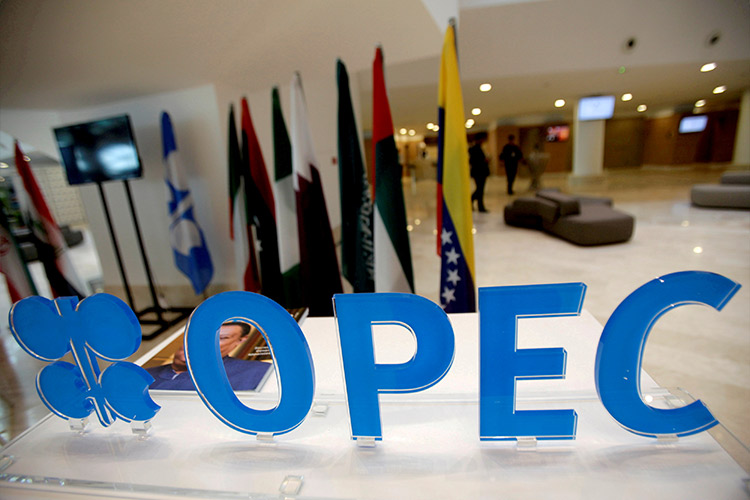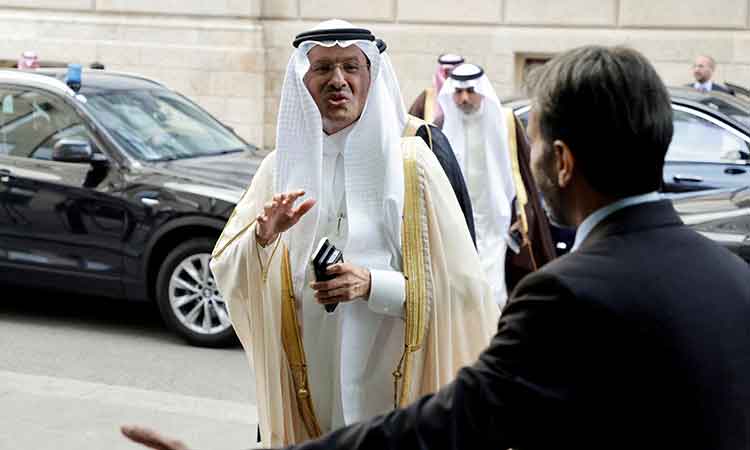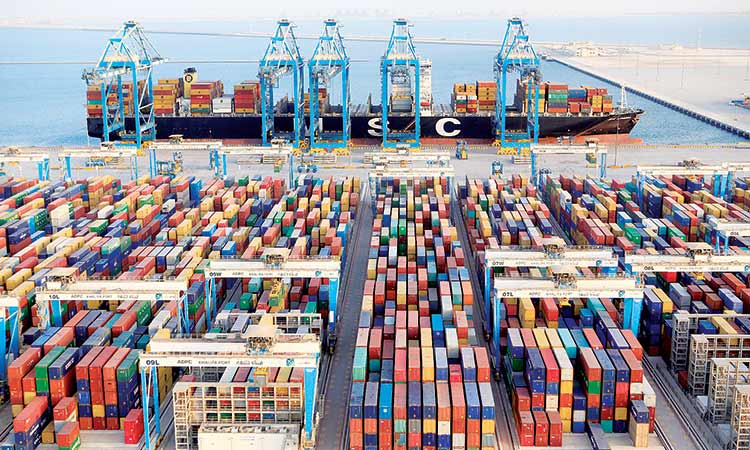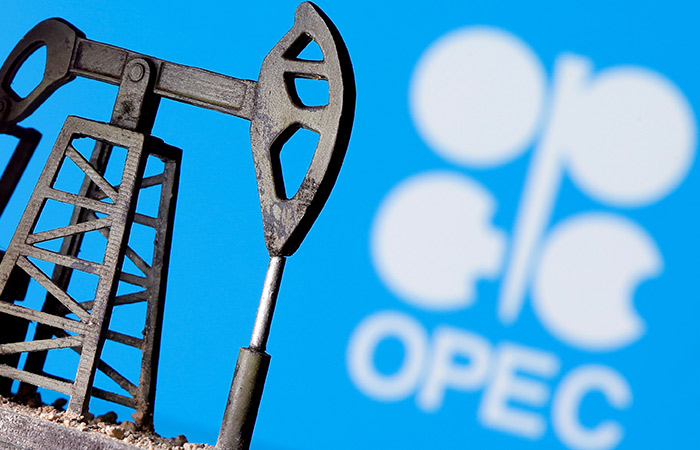Opec nations, Russia agree to cut oil production to lift prices
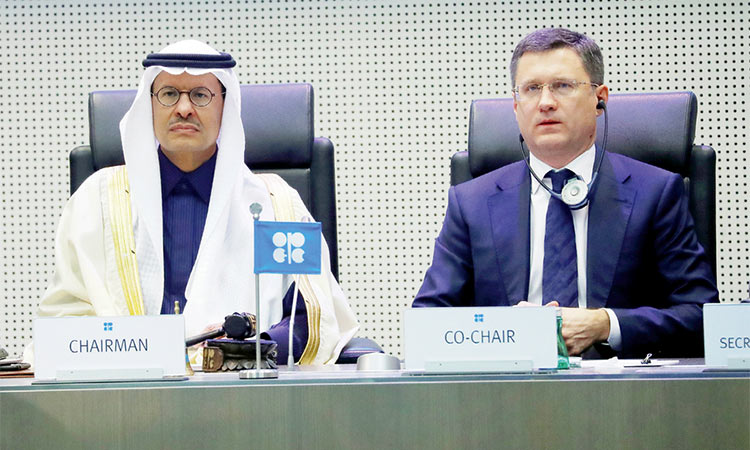
Prince Abdulaziz Bin Salman Al Saud and Alexander Novak at the beginning of an Opec and non-Opec meeting in Vienna on Friday. Reuters
The decision came after long discussions at the Opec headquarters in Vienna. The group’s goal is to to support the price of energy. But they also do not want to lose global market share to the United States, which keeps pumping more oil.
“We have decided to reduce production by 500,000 barrels a day through the first quarter of next year,” said Russian energy minister Alexander Novak.
The cuts come on top of a reduction of 1.2 million barrels a day that they have been observing for the past three years.
The sticking point in the talks appears to be how to share the cuts among the 14 Opec countries and nations like Russia that have been coordinating their production with the cartel in recent years.
Saudi Arabia has been bearing the burden of the largest share of production cuts recently. But some countries including Iraq and Russia have been producing more than their expected.
Analysts note that if countries are already not complying with the current agreement, voting for more cuts could be pointless.
Oil prices rose sharply on Friday and were on track for weekly gains as a meeting of Opec and its allies agreed to extend output cuts by 500,000 barrels per day in early 2020.
The additional cuts by the Organization of the Petroleum Exporting Countries and allies including Russia - a grouping known as Opec+ - will last throughout the first quarter next year. The group will meet again in early March for an extraordinary meeting to set its policy.
Opec will shoulder around two thirds of the additional cuts.
Brent futures were up around 2% to $64.59 by 1456 GMT and are on track to rise nearly 4% on the week.
West Texas Intermediate oil futures rose around 2% to $59.49 a barrel. They are set to rise nearly 8% on the week.
The cuts next year are in addition to Opec’s previous cut agreement of 1.2 million bpd and represent about 1.7% of global oil output.
Saudi Energy Minister Prince Abdulaziz Bin Salman said the Kingdom, the world’s largest oil exporter and Opec’s defacto leader, would continue a voluntary cut of 400,000 bpd.
He added that after improved compliance from other members, the actual cut will be effectively 2.1 million bpd.
Compliance has been a sticking point since the coordinated cuts began in 2017 with Saudi Arabia cutting more than required in order to offset overproduction from Iraq and Nigeria.
Shares in Aramco are expected to begin trading this month following pricing on Thursday that made it the world’s biggest IPO.
Prince Abdulaziz told reporters he expected the company to be worth more than $2 trillion in a few months.
Separately, Saudi Aramco shares will start trading on Dec. 11, the Saudi securities exchange Tadawul said in a statement on Friday.
Saudi Arabia’s state oil giant priced its initial public offering at 32 riyals ($8.53) per share on Thursday, raising $25.6 billion and beating Alibaba Group Holding Ltd’s record $25 billion listing in 2014.
The Aramco IPO was launched to raise funds to help diversify the kingdom away from reliance on oil and create jobs for a growing population.
Aramco shares will trade using the symbol 2222 and will have a daily 10% plus or minus fluctuation limit, Tadawul said on its website.
“On the first day of trading only, the opening auction for the Saudi Arabian Oil Company (Saudi Aramco) will be extended for 30 minutes,” it added.
Meanwhile, US Stocks jumped in early trading Friday after the government reported that employers added far more jobs than expected in November.
The Labor Department said employers added 266,000 positions, well above estimates of 184,000. The report also showed unemployment falling to a 50-year low. The strong report should help ease any doubts among investors that the US economy remains healthy.
The surprisingly good employment picture comes at the end of what started as a rough week for the market. Increased trade tensions and disappointing economic data sent the market to steep losses on Monday and Tuesday and the major indexes stayed in a slump through Thursday.
The S&P 500 index is now on track to erase its losses for the week.
Technology and bank Stocks led the gains. Micron Technology rose 3% and JPMorgan Chase climbed 1.7%.
The solid jobs report sent bond yields higher, which banks rely on to charge higher interest rates on mortgages and other loans. The yield on the 10-year Treasury rose to 1.85% from 1.79% late Thursday.
Real estate companies and utilities lagged the market as investors shifted money away from safe-play holdings.
Steady job growth has been one of the bright spots in the economy, along with solid consumer spending. The latest employment report is also a welcome development following reports earlier this week that showed manufacturing continues to shrink and growth in the service sector is slowing.
Agencies
